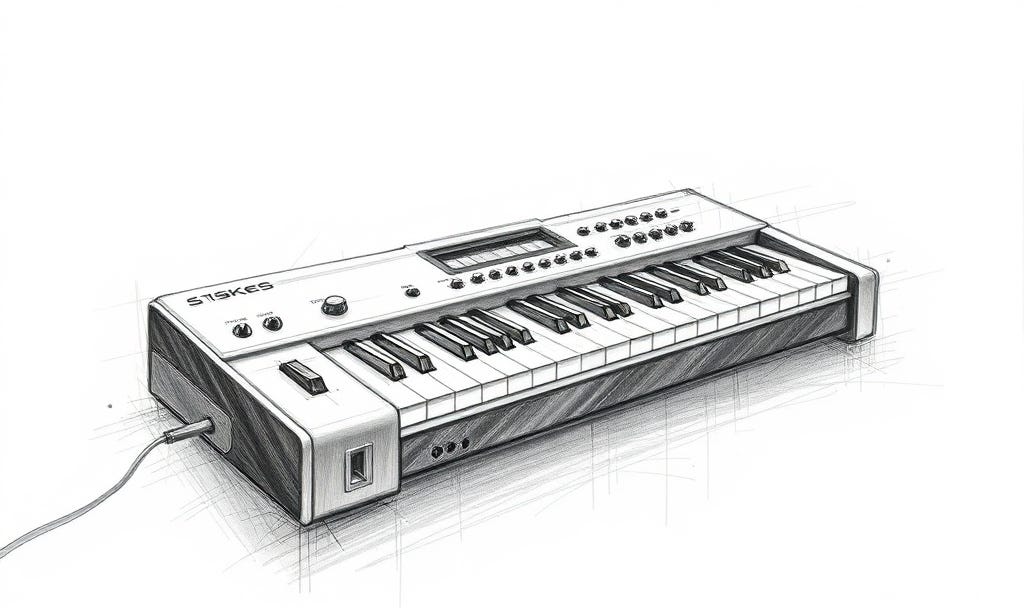What Is Trip-Hop? A Guide to the Genre's History and Pioneers
Discover trip-hop's origins in Bristol, the sonic blueprint, essential artists from Massive Attack to Amon Tobin, and the best albums to start listening.
I used to chase stories. Any genre worked—world music, folk, heavy metal, protest songs—as long as they carried spirit. But around 25, I discovered trip-hop. It hit different. Cinematic. Moody. Nothing else felt quite like it.
☕ Would you like to buy me a coffee?
What Exactly Is Trip-Hop?
Trip-hop is a psychedelic fusion of hip-hop and electronica with slow tempos and atmospheric sound. Born from experimental breakbeat in early 1990s Bristol, it pulls from jazz, soul, funk, dub reggae, and film noir soundtracks—creating introspective music that contemplates rather than energizes.
Think of it as hip-hop’s introspective cousin. Where rap moves crowds, trip-hop moves souls.
The Sound:
Bass-heavy drums with slowed breakbeats (70-90 BPM)
Manipulated samples from soul, jazz, and movie soundtracks
Vinyl texture: crackling, pops, and tape hiss as design choices
Rhodes pianos, saxophones, trumpets, sometimes theremins and Mellotrons
Ethereal female vocals (though not exclusively) with R&B, jazz, and rock influences
Dark, introspective production inspired by post-punk bands like Siouxsie and the Banshees and The Cure
Bristol’s Foundation: Sound Systems to Sampling
Trip-hop didn’t emerge randomly. Bristol’s Sound System Culture—born from Jamaican migration in the 1970s-80s—created DIY speaker stacks where communities gathered. The 1980s riots gave youth freedom to experiment. DJs like Daddy G, Mushroom, 3D, and Tricky operated collectively as The Wild Bunch, blending punk energy, reggae/dub sensibilities, and hip-hop attitude. This foundation became Massive Attack.
The genre also drew from post-punk bands like Siouxsie and the Banshees—artists sampled and covered repeatedly by trip-hop pioneers.
The Bristol Holy Trinity
Massive Attack (Blue Lines, 1991) created the template. “Unfinished Sympathy” proved hip-hop beats could support lush orchestration. They made collaboration central—vocalists like Shara Nelson and Horace Andy became as important as the beats.
Portishead (Dummy, 1994) went darker. Beth Gibbons’ melancholic voice over atmospheric production influenced by 1960s-70s film soundtracks and noir aesthetics created a genre standard. Songs like “Sour Times” and “Glory Box” became blueprints everyone followed.
Tricky (Maxinquaye, 1995) pushed into psychological territory. His whispered raps over claustrophobic production, enhanced by Martina Topley-Bird’s ethereal vocals, showed trip-hop could be unsettling, intimate, and experimental simultaneously.
The Term’s Awkward Birth: In June 1994, journalist Andy Pemberton coined “trip hop” in Mixmag to describe DJ Shadow’s “In/Flux”—suggesting the track gave listeners the impression of being on a musical trip. Ironically, many Bristol artists quickly disowned the name. Portishead’s Geoff Barrow called it “nonsense developed by people in London”.
The Extended Cast: Beyond Bristol
Trip-hop spread globally because its blueprint was flexible. Amon Tobin pioneered vocal-less trip-hop, drawing from obscure lounge sound and exotic palettes, creating music that blended trip-hop with drum & bass and acousmatic elements.
Morcheeba emerged with sublime influences of rock, folk and downtempo, becoming a leading force in the trip-hop movement. Sneaker Pimps debut “Becoming X” (1996) was a seminal trip-hop LP, with their single “6 Underground” becoming iconic. Lamb, formed in Manchester with Lou Rhodes’ distinctive vocals, blended trip-hop with drum and bass and jazz influences.
Nightmares on Wax from Leeds mixed jazz, Latin, hip-hop dub, funk, and soul into languid after-party soundtracks. Kruder & Dorfmeister from Vienna brought lounge sophistication. Belgian band Hooverphonic added orchestral elements.
Record Labels That Shaped It:
Mo’Wax Records: Home to DJ Shadow and experimental hip-hop
Ninja Tune: Founded by Coldcut, significantly influenced London’s trip-hop with artists like DJ Food, The Herbaliser, and 9 Lazy 9
Warp Records
Influence and Evolution
Trip-hop spawned subgenres including IDM, dubstep, acid jazz, and illbient music. Artists like Gorillaz, Nine Inch Nails, PJ Harvey, Björk, Beck, Radiohead, and more recently Billie Eilish and Lana Del Rey drew heavy inspiration.
In the mid-2020s, the genre saw a resurge in artists like FKA Twigs, Addison Rae, and Tame Impala.
How to Listen: A Beginner’s Approach
Trip-hop rewards patience. It’s not music to half-listen to—it’s designed for full immersion. The genre emerged as “club-adjacent music for after-club listening”—a tripped-out, soporific audio balm for clubbers returning from nights out.
Start with mood, not tempo. Don’t chase the beat. Listen for texture, atmosphere, how samples sit in space, how reverb creates depth. Notice the vinyl crackle as a deliberate choice, not a flaw.
Your Starting Point
Essential Foundation (Listen in Order):
Massive Attack - Blue Lines (1991)
Portishead - Dummy (1994)
Tricky - Maxinquaye (1995)
Then Explore:
Sneaker Pimps - Becoming X (1996)
Lamb - Lamb (1997)
Amon Tobin - Bricolage (1997)
Air - Moon Safari (1998)
Modern/Contemporary:
Bonobo - Black Sands (2010+)
Zero 7 - Simple Things (2000+)
FKA Twigs - Eusexua (2023)
Start with Portishead if you want pure atmosphere. Start with Massive Attack if you want connection to hip-hop roots. Start with DJ Shadow if you want to understand sample manipulation as an art form.
After that? Follow your instincts. Trip-hop is patient music. It rewards sitting still and letting it wash over you.




It's an interesting article and a good read, but how did you fail to mention it's relationship with downtempo when it's a common talking point within the community? Some of the albums you've recommended (Zero 7 and Air) are quite hard to recognize as triphop.
How about Ruby, Lesley Rankine from Silverfish's solo project? And I think Massive Attack's No Protection remix by Mad Professor is the best Massive Attack record, though obviously way more dubby. Alpha's Come From Heaven is one I used to listen to all the time, more subdued. Two Lone Swordsmen The Fifth Mission is another one. I prefer Tricky's next record Pre Millenium Tension. That said, I still think Portishead is top of the heap for this kind of stuff, whether called trip hop or not.